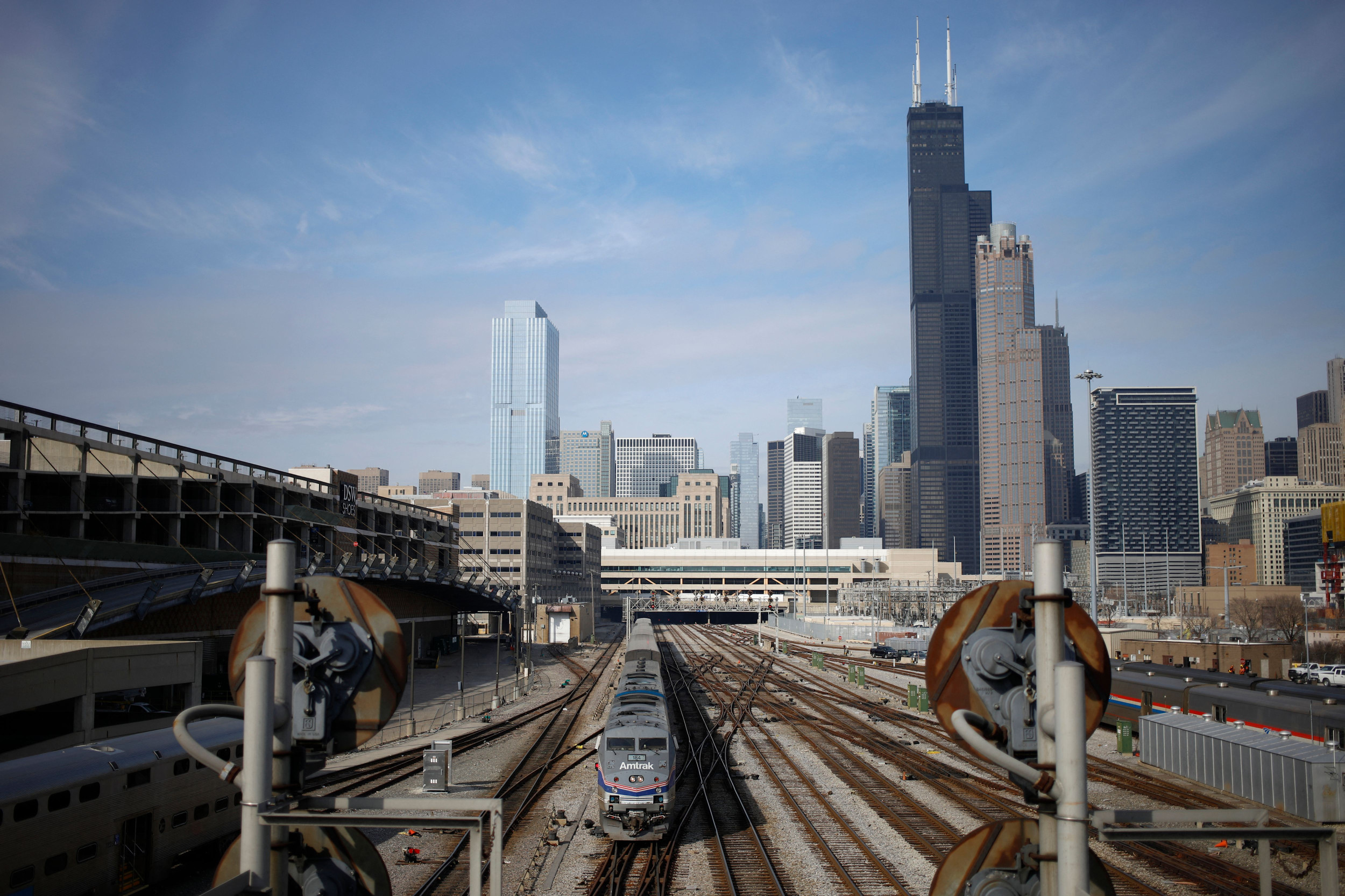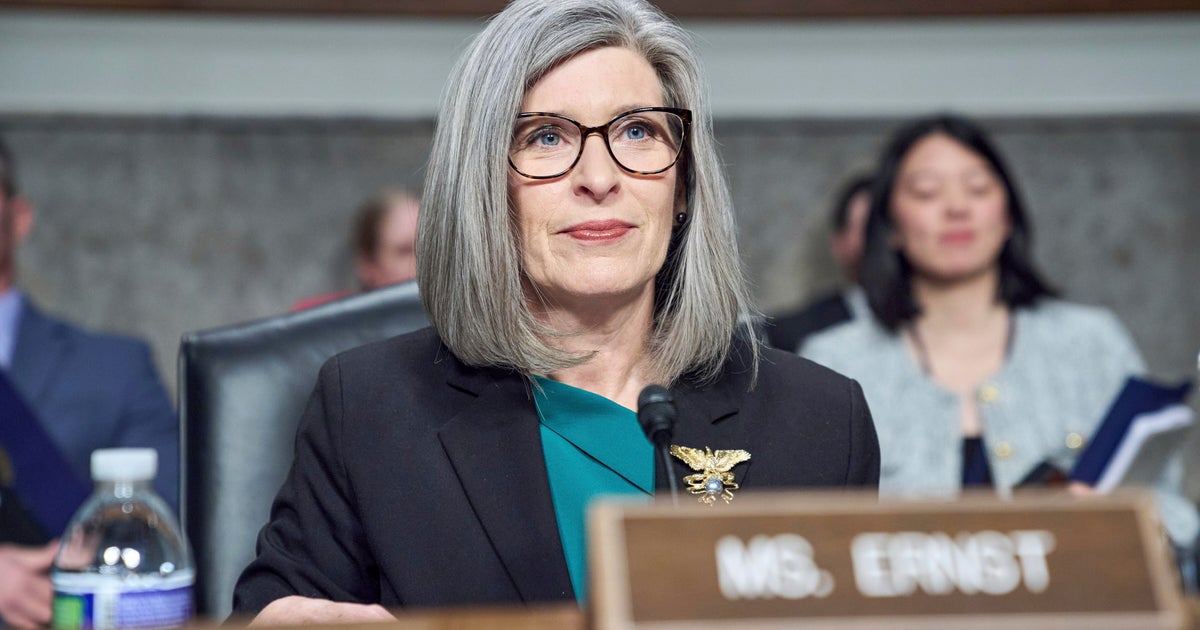Politics
Tennessee Gov. Lee signs bill allowing concealed carry for public schoolteachers

Tennessee teachers and staff will be allowed to carry concealed handguns on public school grounds under legislation signed into law by Gov. Bill Lee on Friday.
Lee, a Republican, had announced his support for the proposal just the day before while flanked by top Republican legislative leaders who had helped shepherd the bill through the GOP-dominant General Assembly.
“What’s important is that we give districts tools and the option to use a tool that will keep their children safe,” Lee told reporters.
TENNESSEE NEARS LAW BANNING ADULTS FROM HELPING MINORS FIND, RECEIVE SEX REASSIGNMENT CARE
As the idea of arming teachers began to gain support inside the General Assembly, gun control advocates and families began swarming to the Capitol to show their opposition. During the final vote, protesters chanted “Blood on your hands” and many members of the public who oppose the bill harangued Republican lawmakers after the vote, leading House Speaker Cameron Sexton to order the galleries cleared.
FILE – Tennessee Gov. Bill Lee responds to questions during a news conference Tuesday, April 11, 2023, in Nashville, Tenn. (AP Photo/George Walker IV, File)
According to the statute, which becomes effective immediately, parents and other teachers will be barred from knowing who is armed at their schools.
A principal, school district and law enforcement agency would have to agree to let staff carry guns, and then workers who want to carry a handgun would need to have a handgun carry permit and written authorization from the school’s principal and local law enforcement. They would also need to clear a background check and undergo 40 hours of handgun training. They couldn’t carry guns at school events at stadiums, gymnasiums or auditoriums.
The legislation is the biggest expansion of gun access in the state since last year’s deadly shooting at a private elementary school in Nashville where shooter indiscriminately opened fire and killed three children and three adults before being killed by police.
Lee initially asked lawmakers to keep guns away from people deemed a danger to themselves or others in response to the shooting, the Republican supermajority ignored that request.
Many of the Covenant families had met with Lee and lawmakers hoping to persuade them to drop the idea of arming teachers. In the final days of the legislative session, Covenant families said they had collected nearly 4,300 signatures from Tennesseans against having public school staffers carry weapons on school grounds.
“There are folks across the state who disagree on the way forward, but we all agree that we should keep our kids safe,” Lee said Thursday.
It’s unclear if any school districts would take advantage if the bill becomes law. For example, a Metro Nashville Public Schools spokesperson, Sean Braisted, said the district believes “it is best and safest for only approved active-duty law enforcement to carry weapons on campus.”

Politics
Trump pushes 'Big, Beautiful Bill' as solution to four years of Biden failures: 'Largest tax cut, EVER'

NEWYou can now listen to Fox News articles!
President Donald Trump turned to social media on Monday evening to sell Americans on his vision for the “Big, Beautiful Bill,” calling it an opportunity to turn the U.S. around after what he called “four disastrous years” under former President Joe Biden.
The House passed the spending bill in late May and it is now in the Senate’s hands.
“We will take a massive step to balancing our Budget by enacting the largest mandatory Spending Cut, EVER, and Americans will get to keep more of their money with the largest Tax Cut, EVER, and no longer taxing Tips, Overtime, or Social Security for Seniors — Something 80 Million Voters supported in November,” Trump said in a post on Truth Social. “It will unleash American Energy by expediting permitting for Energy, and refilling the Strategic Petroleum Reserve. It will make American Air Travel GREAT AGAIN by purchasing the final Air Traffic Control System.”
The president said the bill includes the construction of The Gold Dome, which he says will secure American skies from adversaries. The bill will also secure the border by building more of the wall and “supercharging the deportation of millions of Criminal Illegals” that he said Biden allowed into the U.S.
WHITE HOUSE: DEMS HAVE ‘NEVER BEEN MORE RADICAL, OUT OF TOUCH’ AFTER VOTING AGAINST ‘BIG, BEAUTIFUL BILL’
President Donald Trump turned to Truth Social on Monday night to sell his “Big, Beautiful Bill” to the American people. (AP Photo/Evan Vucci)
“It will kick millions of Illegals off Medicaid, and make sure SNAP is focused on Americans ONLY! It will also restore Choice and Affordability for Car purchases by REPEALING Biden’s EV Mandate, and all of the GREEN NEW SCAM Tax Credits and Spending,” Trump wrote. “THE ONE, BIG, BEAUTIFUL BILL also protects our beautiful children by stopping funding for sick sex changes for minors.”
The Senate returned to Washington on Monday, and in his post, Trump called on his Republican allies in Congress to work quickly to get the bill on his desk before July 4.
In a separate post, Trump addressed what he referred to as false statements about the bill, reiterating that it is the “single biggest Spending Cut in History.”
GOP HOLDOUTS SOUND ALARM ON $36T DEBT CRISIS AS TRUMP’S ‘BIG, BEAUTIFUL BILL’ PASSES HOUSE VOTE
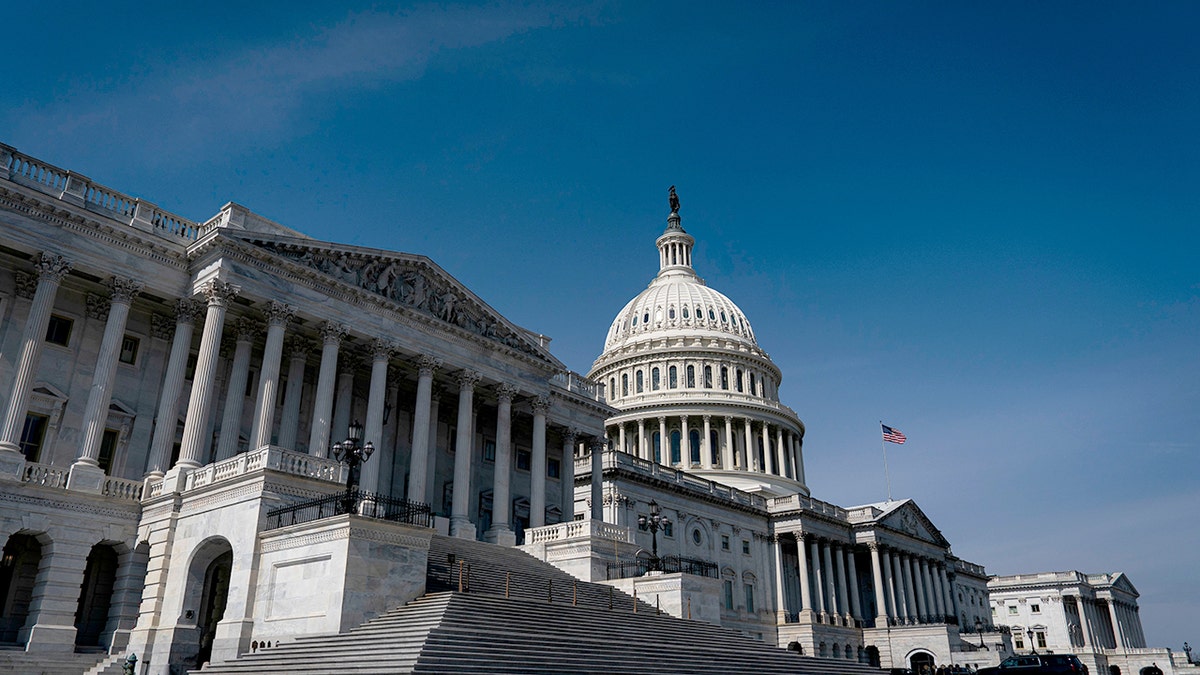
The Senate returns to Washington this week, where it will work through President Trump’s Big Beautiful Bill. (Al Drago/Bloomberg via Getty Images)
He noted that there will not be any cuts to Social Security, Medicare or Medicaid, adding they will be saved from “the incompetence of the Democrats.”
“The Democrats, who have totally lost their confidence and their way, are saying whatever comes to mind — Anything to win!” Trump said. “They suffered the Greatest Humiliation in the History of Politics, and they’re desperate to get back on their game, but they won’t be able to do that because their Policies are so bad, in fact, they would lead to the Destruction of our Country and almost did.
“The only ‘cutting’ we will do is for Waste, Fraud, and Abuse, something that should have been done by the Incompetent, Radical Left Democrats for the last four years, but wasn’t,” he concluded.
HOUSE GOP UNVEILS MEDICAID WORK REQUIREMENTS IN TRUMP’S ‘BIG, BEAUTIFUL BILL’
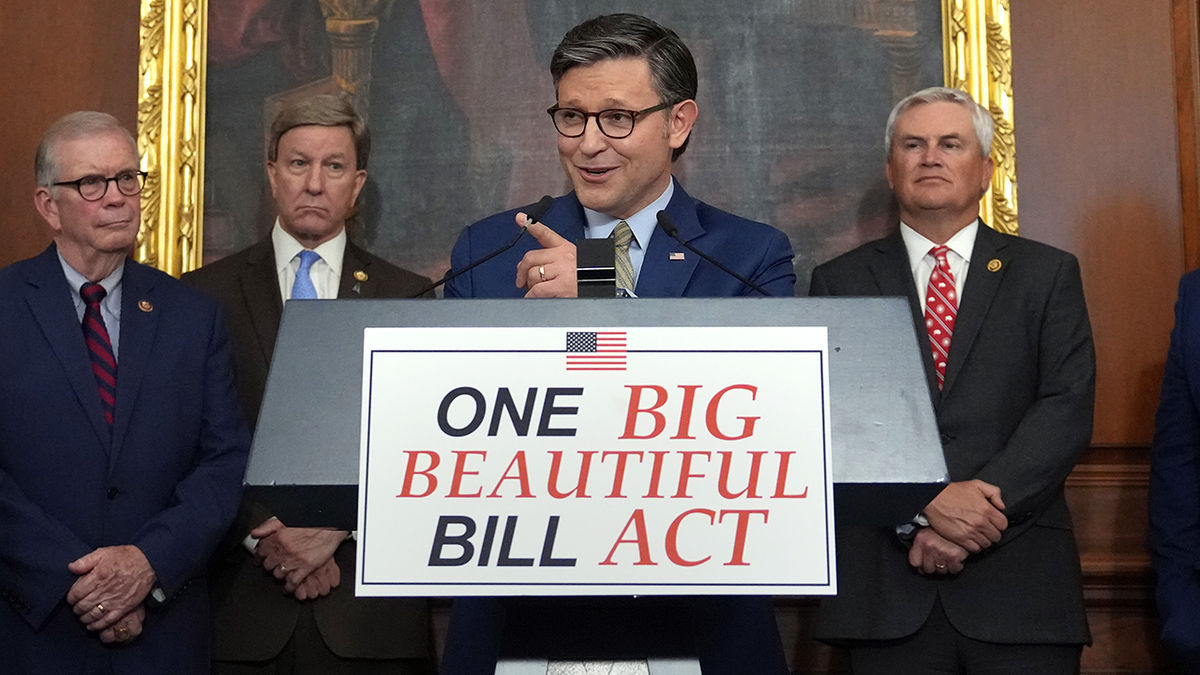
House Speaker Mike Johnson and House Republicans celebrated passing Trump’s “big, beautiful bill” on Thursday. (Getty Images)
Senate Republicans will get their turn to parse through the colossal package and are eying changes that could be a hard sell for House Speaker Mike Johnson, R-La., who can only afford to lose three votes.
Congressional Republicans are in a dead sprint to get the megabill — filled with Trump’s policy desires on taxes, immigration, energy, defense and the national debt — onto the president’s desk by early July.
If passed in its current state, the bill is expected to add roughly $3 trillion to the national debt, including interest, according to the Committee for Responsible Federal Budget.
Fox News Digital’s Amy Nelson, Pilar Arias, Brie Stimson and Alex Miller contributed to this report.
Politics
Molotov cocktail attack part of surge in antisemitic violence; 'community is terrified'

The morning after a man hurled Molotov cocktails at a crowd of Jewish Americans in Boulder, Colo., Rabbi Noah Farkas celebrated the first day of Shavuot in the usual way: He read the Torah about the giving of the Ten Commandments to the Israelites at Mt. Sinai.
But Farkas, the president of the Jewish Federation of Greater Los Angeles, said what was supposed to be a holiday celebrating the establishment of law and order was marred by the weekend violence.
“The community is terrified,” Farkas said outside Temple Ramat Zion in Northridge.
“It’s remarkable to me that those who want to assault us are coming up with ever new and novel ways to do harm to us and to try to kill us.”
Twelve people between the ages of 52 and 88 were burned in the Colorado attack. A man — identified by law enforcement as Mohamed Sabry Soliman, 45, an Egyptian citizen who had overstayed his tourist visa — used a “makeshift flamethrower” to attack demonstrators marching peacefully in a weekly event supporting Israeli hostages in Gaza.
According to an FBI affidavit, the attacker yelled “Free Palestine!” — the same cry uttered by the suspect in a May 21 incident in which two Israeli Embassy aides were shot and killed outside the Capital Jewish Museum in Washington.
The back-to-back attacks have unnerved many Jewish Americans — particularly as they come just a month after a man set fire to the residence of Pennsylvania Gov. Josh Shapiro, who is Jewish. A suspect later said the fire was a response to Shapiro’s stance on Israel’s war in Gaza.
“We are in a completely new era for antisemitic violence in the United States,” said Brian Levin, the founder of the Center for the Study of Hate and Extremism and professor emeritus at Cal State San Bernardino. “We are now at a point of extraordinary national security concern with respect to protecting Jewish communities across the U.S. and worldwide.”
Anti-Jewish hate crimes, Levin said, hit record levels nationally in 2023 and 2024. In 2023, the last year that the FBI has available data, anti-Jewish hate crimes rose 63% to a record 1,832 incidents, Levin said. Last year, religious hate crimes were up significantly in major U.S. cities, Levin said, with anti-Muslim hate crimes rising 18%, and anti-Jewish ones rising for the fourth consecutive year, up 12% to a new record.
“Over the last decade, we’re seeing more mass casualty attacks, and they’re becoming more frequent and more fatal,” Levin said. “It used to be that anti-Jewish hate crimes, unlike a lot of other hate crimes, were much more tied to property damage and intimidation. Now we’re seeing just a slew of high-intensity types of attacks.”
The attacks in the U.S. come as United Nations officials and aid groups warn that the situation in Gaza has become increasingly dire, with Palestinians in Gaza on the brink of famine as Israel continues its 19-month military offensive against Hamas militants.
Two weeks ago, Israel agreed to pause a nearly three-month blockade and allow a “basic quantity” of food into Gaza to avert a “hunger crisis” and prevent mass starvation.
On Sunday, Gaza health officials and witnesses said more than 30 people were reported killed and 170 wounded as Palestinians flocked to an aid distribution center in southern Gaza, hoping to obtain food. The circumstances were disputed. Witnesses said Israeli forces fired on crowds about 1,000 yards from an aid site run by a U.S.-backed foundation, but Israel’s military denied its forces fired at civilians.
Levin attributed the rise in violence in the U.S. to a number of factors, including the Israel-Hamas war and the “increasingly unregulated freewheeling online environment.” Horrifying imagery coming out of the Middle East, Levin said, was amplified on social media by those who ascribed responsibility to anyone who believes Israel has a right to exist, or is Jewish, or wanted hostages to be released.
“What happens is angry and unstable people not only find a home for their aggression, but a honed amplification and direction to it that is polished by this cesspool of conspiracism and antisemitism,” Levin said.
In Los Angeles’ Pico-Robertson neighborhood, the mood was subdued Monday as a smattering of Orthodox families made their way to services to observe Shavuot. Many kosher establishments were closed and armed guards flanked entrances to larger Jewish centers and temples.
On Pico Boulevard, a 25-year-old Orthodox man carried a prayer shawl close to his chest as he headed to a service at a temple just before noon. He had slept just a few hours after staying up all night reading the Torah.
Despite the news of the attack in Colorado, the man — who identified himself as Laser — carried an easy smile.
“It’s a joyous holiday,” he said.
The Colorado attack was horrifying, he said, but it was not anything new and paled in comparison with the feeling that descended on the Jewish community in Los Angeles and across the world after Oct. 7.
“It’s never good to see or read about those types of things,” he said. “We just pray for the ultimate redemption, for peace here, peace abroad, peace around the world.”
At Tiferet Teman Synagogue, a man standing at the door repeatedly apologized to a Times reporter, saying that he would not discuss the event that happened in Colorado.
“I’m not going to invite politics into the community,” he said. “God bless you all.”
Others observing the holiday declined to have their photo taken and many of the businesses were closed. A quiet buzz pervaded Pico Boulevard as Orthodox members of the community made their way to services, many of them trying their best to avoid eye contact.
A Persian Jewish man from Iran said he has always been hesitant about religious violence. The man, who declined to give his name, was on his way to service.
“You always have to keep your eyes open,” he said. “No matter where you are in the world.”
Noa Tishby, an Israeli-born author who lives in L.A. and is Israel’s former special envoy for combating antisemitism and delegitimization, said that many Jewish people were afraid to congregate.
“The Jewish community feels under siege,” she said. “People are removing their mezuzahs … They’re removing Jewish insignia from themselves, removing their Star of David or hiding it. They’re afraid to go to Jewish events.”
Tishby said that the Colorado attacker appeared to be motivated by antisemitism: the views and beliefs of the victims didn’t matter.
“What if that particular woman that man tried to burn alive yesterday, what if she was a Bibi hater, would that appease him?” Tishby asked, using a nickname for Israeli Prime Minister Benjamin Netanyahu. “The answer is no. He doesn’t know what her political opinions are in America or in Israel. He just burned her because she was Jewish.”
Antisemitism, Tishby argued, was a shape-shifting conspiracy theory that had evolved into anti-Zionism.
“What happened is that the word Zionist is now a code name for Jew,” she said. “We have been warning for decades that anti-Zionism is the new face of antisemitism…. They’re taking all the hate, everything that’s wrong in the world right now, and they’re pinning it on the Jewish state.”
L.A. Mayor Karen Bass was quick to denounce the attack Sunday as “an atrocious affront to the very fabric of our society and our beliefs here in Los Angeles.” In a statement, she said she would call an emergency meeting at City Hall addressing safety and security across the city immediately after Shavuot.
“LAPD is conducting extra patrols at houses of worship and community centers throughout LA. Anti-Semitism will not be tolerated in this city,” she said.
After speaking to Bass on Sunday, Farkas said that he planned to meet in person with the mayor on Wednesday after the Shavuot holiday to have a “real, frank conversation” about antisemitism.
“There is a cycle that we go through where our hearts are shattered and yet we have to keep enduring,” Farkas said. “And it makes us call into question the commitment of our wider community and our government to the safety of the Jewish community.”
The Associated Press contributed to this report.
Politics
California beach ‘Resist!’ protest pushes ‘kindness’ while calling to ‘86 47’ in anti-Trump message
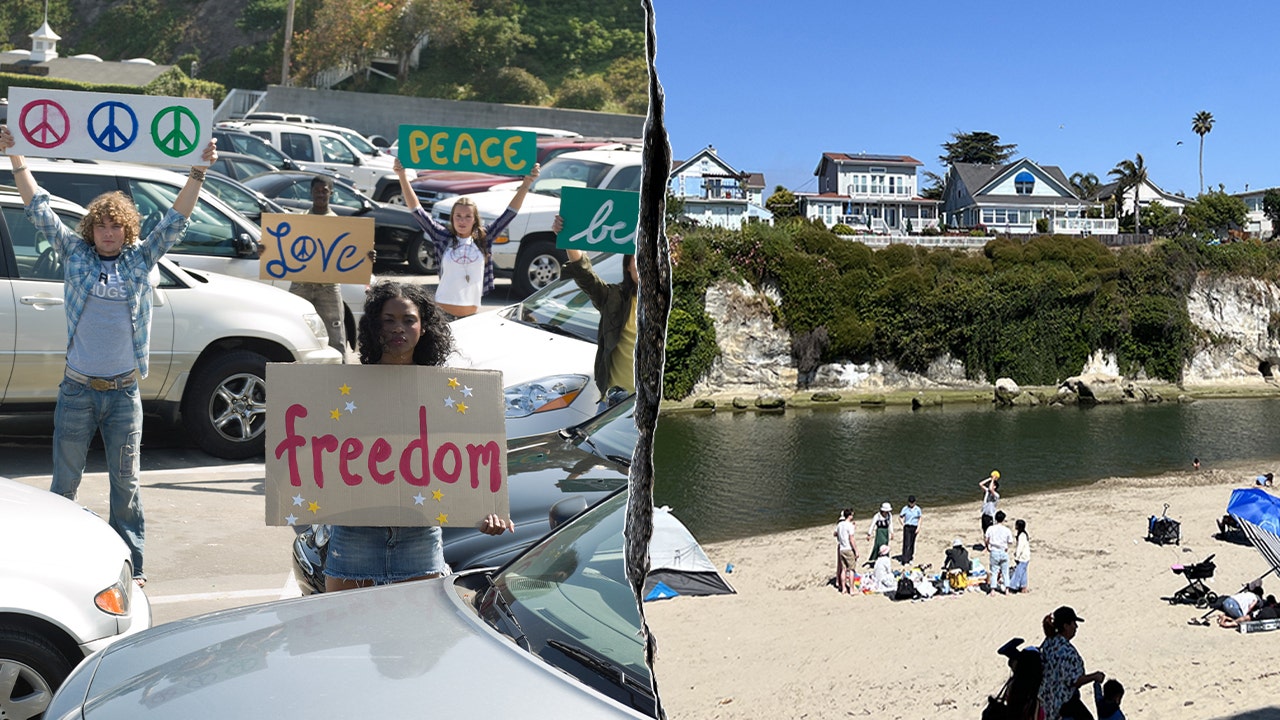
Nearly 1,000 people gathered at Main Beach in Santa Cruz, California, on Saturday for a Pride Month protest aimed squarely at President Donald Trump.
Participants formed a massive human banner that spelled out “Resist!” in rainbow colors as part of a demonstration organized by Indivisible Santa Cruz County.
The 220-foot-wide display, with letters reaching 70 feet high, was designed by longtime left-wing activist Brad Newsham.
Organizers described the event as a peaceful act of resistance and a show of solidarity with the LGBTQ+ community.
SEATTLE MAYOR ACCUSED OF LYING AFTER BLAMING CHRISTIAN RALLY FOR PARK VIOLENCE
Left: Protesters hold signs reading “Peace,” “Love,” and “Freedom.” Right: Beachgoers gather near coastal homes along the cliffs at Main Beach in Santa Cruz, California. The area was the site of a large-scale protest against President Donald Trump organized as part of the city’s Pride celebration. (iStock and Getty Images)
“It’s very important, the more people [who] can show our neighbors, our politicians in the world, that nonviolent resistance is the way to express our dissatisfaction with the way our country’s going,” said event organizer Becca Moeller to Lookout Santa Cruz.
But just above the colorful banner was a very different kind of message: “86 47,” a phrase many interpreted as a call to “get rid of” the 47th President of the United States.
In slang, “86” typically means to cancel, eliminate, or even destroy. Combined with “47,” the number now associated with President Trump’s second term, the phrase has raised alarms among critics who say it crossed a line.
Earlier this month, former FBI Chief James Comey posted a similar message in the sand, but instead of kelp, they were shells. He has since removed the post after widespread criticism and action by law enforcement.
SEATTLE MAYOR BLAMES CHRISTIAN RALLY FOR INSPIRING VIOLENT ‘ANARCHISTS’ WHO ‘INFILTRATED’ COUNTER-PROTEST
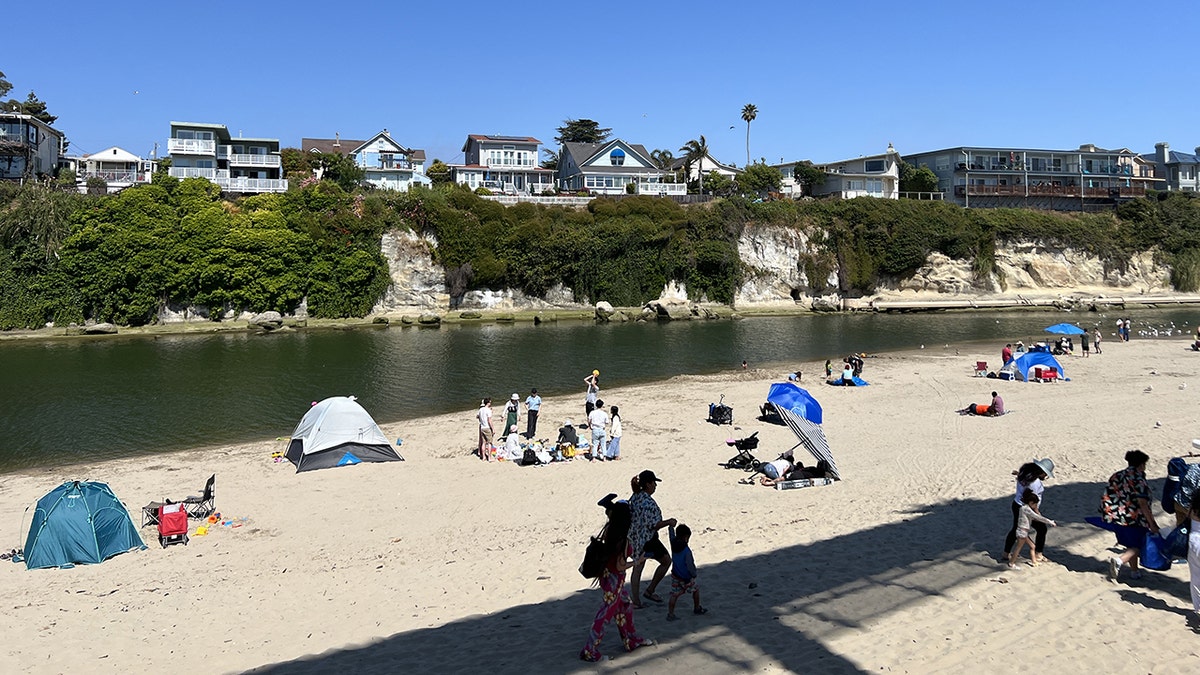
Beachgoers enjoying a sunny day with tents and umbrellas along the coastline, houses situated on the cliff in the background, Santa Cruz, California, June 22, 2024. (Smith Collection/Gado/Getty Images)
“We don’t need a king. We want to go back to the way we were. We want to make America kind again,” said protester Beth Basilius to Lookout Santa Cruz.
While the event promoted “kindness” and inclusivity, the imagery told a more conflicted story.
“They claim they want to make America ‘kind’ again, but then they spell out ‘86 47’ in the sand. That’s not kindness — that’s a coded call to eliminate someone they disagree with. It’s hypocritical,” said Mike LeLieur, chair of the Santa Cruz County Republican Party to Fox News Digital.
LeLieur said local conservatives face growing hostility from the political left.
“We’ve had vehicles vandalized, tires slashed, and windows broken. I was forced off the road and attacked just for having a Trump sticker. At our State of the Union watch party, we were swarmed by angry protesters. It’s been nonstop hostility — and these are the same people who call themselves the ‘Party of Peace.’”

Aerial view of the Santa Cruz Beach Boardwalk with various amusement rides and beachgoers on a sunny day, Santa Cruz Beach Boardwalk, Santa Cruz, California, June 22, 2024. (Smith Collection/Gado/Getty Images)
Just 8.5% of voters in the city of Santa Cruz are registered Republicans, according to the most recent data from the California Secretary of State.
Supporters of the protest claimed that “86 47” was a symbolic rejection of Trump’s agenda, not a literal threat. But critics say that argument falls flat in a political climate where coded language carries real-world consequences.
“In California — and especially in Santa Cruz County — the left is creating a political environment of non-acceptance and persecution,” said Daniel Enriquez, a representative of the California Republican Assembly. “It’s consistent with the goals of socialist movements throughout history.”
Jenny Evans, co-leader of Indivisible Santa Cruz County, defended the event.
“When a great number of people come out to do something like this, it just is one more thing to show that we’re not all saying, ‘Fine, fine. We’ll go along with whatever you want,’” she said to Lookout Santa Cruz.
The event was also part of Santa Cruz’s 50th Pride celebration. Participants were instructed to dress in matching rainbow colors, coordinated with fabric laid out across the beach starting at 7 a.m.
The protest was peaceful, but critics say calling for kindness while displaying “86 47” sent a message that was anything but.
Indivisible Santa Cruz County did not immediately respond to Fox News Digital’s request for comment.
-

 Business1 week ago
Business1 week agoPlastic Spoons, Umbrellas, Violins: A Guide to What Americans Buy From China
-

 Movie Reviews1 week ago
Movie Reviews1 week agoMOVIE REVIEW – Mission: Impossible 8 has Tom Cruise facing his final reckoning
-

 Movie Reviews1 week ago
Movie Reviews1 week ago‘Magellan’ Review: Gael Garcia Bernal Plays the Famous Explorer in Lav Diaz’s Exquisitely Shot Challenge of an Arthouse Epic
-

 Technology1 week ago
Technology1 week agoThe oldest Fire TV devices are losing Netflix support soon
-

 Maryland1 week ago
Maryland1 week agoMaryland, Cornell to face off in NCAA men’s lacrosse championship game
-

 Tennessee1 week ago
Tennessee1 week agoTennessee ace Karlyn Pickens breaks her own record for fastest softball pitch ever thrown
-

 West1 week ago
West1 week agoRiley Gaines says 'literal human feces' thrown in protest of Turning Point USA at University of Washington
-

 World1 week ago
World1 week agoAustralia begins cleanup after floods kill 5, strand thousands


